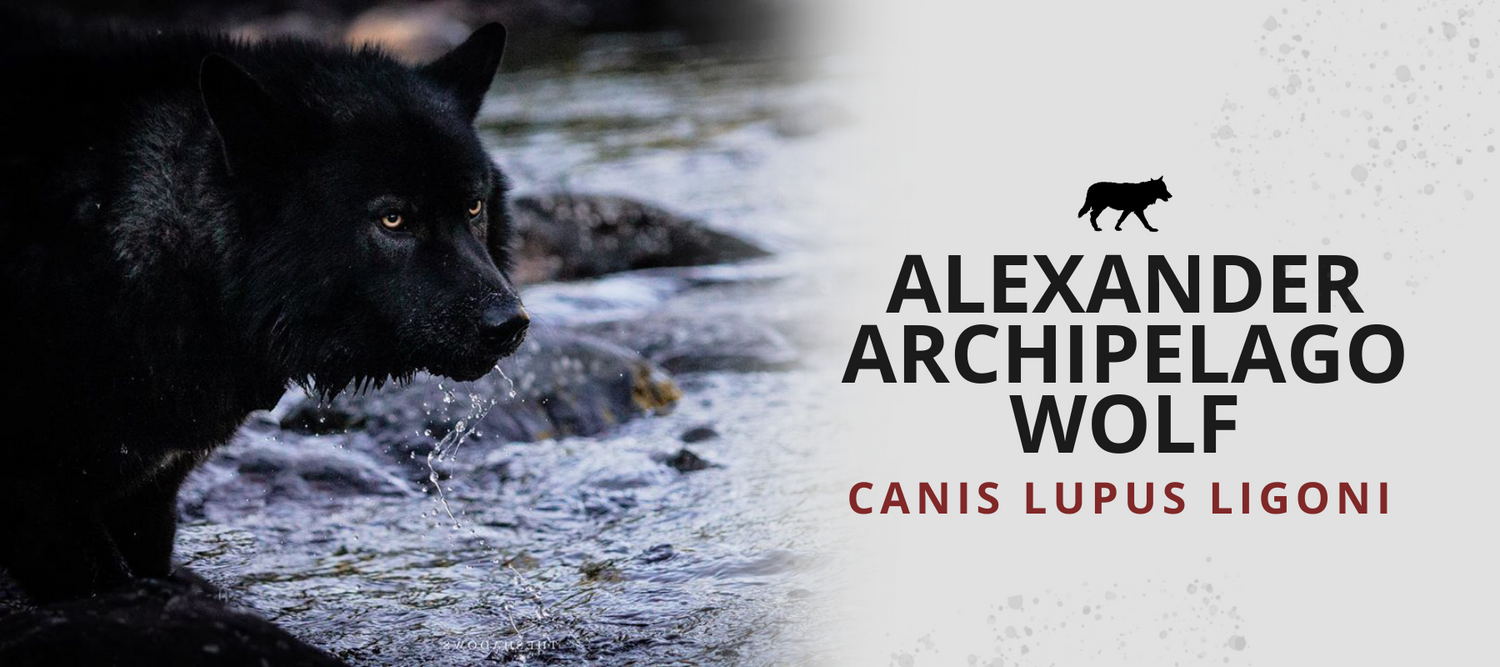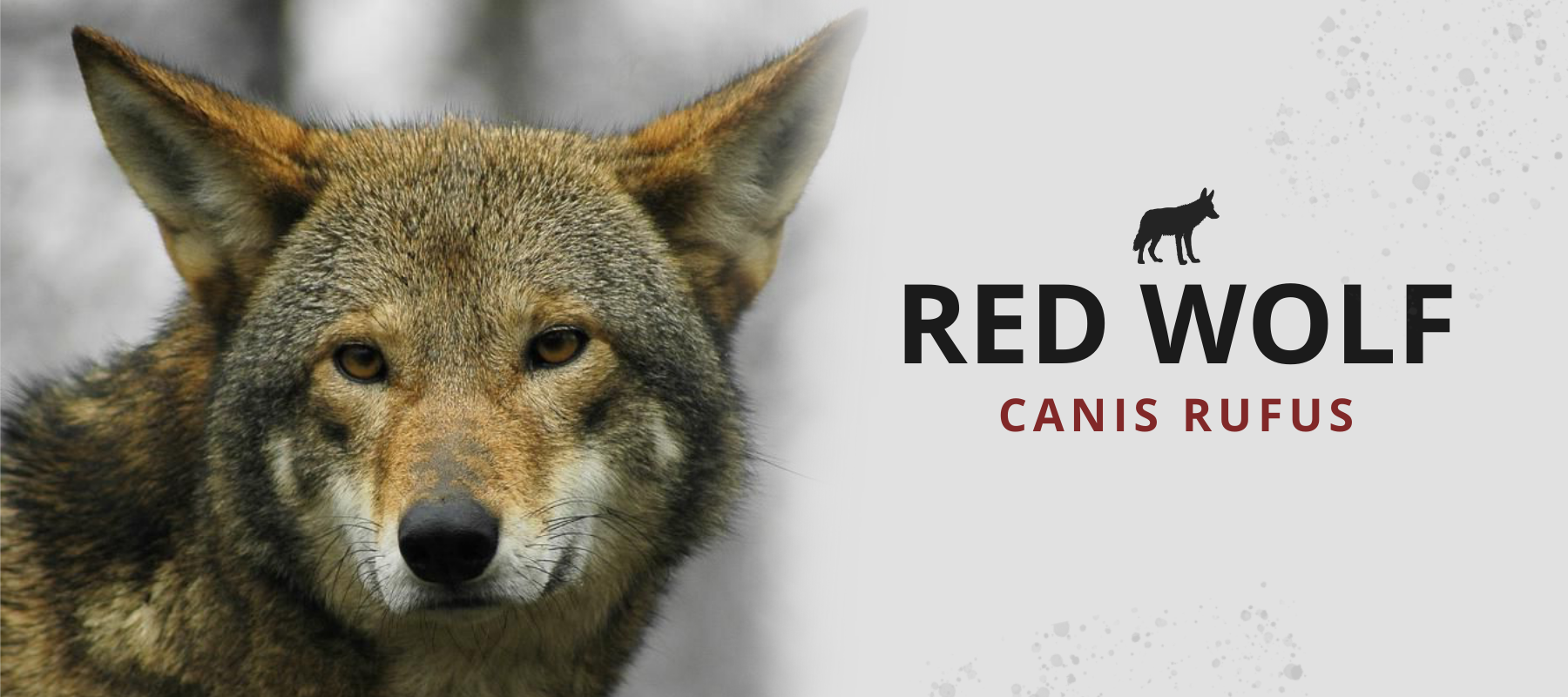
CANIS LUPUS LIGONI
Alexander Archipelago wolf (Canis lupus ligoni) is a subspecies of the gray wolf, close to the wolf of the Great Plains, from which it probably evolved according to recent taxonomic studies. This canid, endemic to the Alexander Archipelago, was classified as a subspecies of the gray wolves in 1937 by the American biologist Edward Alphonso Goldman.
- Common name: Alexander Archipelago wolf
- Scientific name: Canis lupus ligoni
- Other names: Black wolf
- Specie: Gray wolf
- Type: Mammals
- Diet: Carnivore
- Average size: 3.60 feet (1.1 m)
- Weight: 30 to 50 lbs
ALEXANDER ARCHIPELAGO WOLF DESCRIPTION
This black tailed Alexander Archipelago wolf is generally smaller than the Alaskan wolf. Its average size is about 3.60 feet (1.1 m) long and 2 feet (0.61 m) high and weighs between 30 lbs and 50 lbs. This maned wolf have dark coat is short, and can have a range of tones from dark gray brown to lighter shades. Some individuals have shades ranging from pure black to combinations of black and white or a brighter cinnamon color.

ALEXANDER ARCHIPELAGO WOLF HABITAT
The Alexander Archipelago wolf mainly inhabited in rocky mountains and areas around the Alexander Archipelago. This area consists partly of the Tongass National Forest where this wolf lives.
It can also be observed in areas around Dixon Entrance in the great bay of Yakutat, you can even see it in all others islands of Alexander Archipelago. The only areas where none of them has been seen is Chichagof, Admiralty and Baranof islands.
These islands consist of submerged coastal mountain peaks with steep shores. The density of vegetation and forest is conducive to the abundance of wildlife and the development of many animals. Many wild wolves move freely between the islands and their population may change over time.
These migrations make it difficult to keep track of their population. This subspecies of wolf canis lupus ligoni is relatively isolated from the others by mountains and water barriers.

ALEXANDER ARCHIPELAGO WOLF DIET
The Alexander Archipelago wild wolf is, like all wolves, a carnivorous predator that feeds on the animals it hunts. Alexander Archipelago wolf diet is mainly based on prey such as mule deer, which is for more than 90% of its diet. Canadian beaver, bison, caribou and other small mammals such as rodents or birds even carcass.
This habit of feeding almost exclusively on a single species is a feature not seen in other North American wolf species. Few years ago, scientists and biologists researchers have learned salmon is one of the main energy sources for many wolf packs.
ALEXANDER ARCHIPELAGO WOLF BREEDING
During the breeding season, the alpha male is the only one who breeds. As a social animal, the wolf pack is leaded by a dominance hierarchy. In southern Alaska, young wolf pups in the Alexander Archipelago are generally born during the last two weeks of April.
Lairs are built 4 or 5 weeks before birth. These dens are found between tree roots, in small caves or rocky crevices, abandoned beaver lodges or burrows abandoned by other mammals.

ALEXANDER ARCHIPELAGO WOLF POPULATION
Wolves in Alaska have been slaughtered since the 1940s. Poisoning and aerial shooting began after the Second World War. In the mid-1950s, the government drastically reduced wolf populations in most of Alaska. Despite a ban on poisoning methods in 1959, extermination and bounty payments for each wolf shot continued until the 1960s.
In 1972, a federal law banned wolf hunting, but despite this ban, poaching continued to be rampant during the 1980s and early 1990s which threatened Alexander Archipelago wolf population.
ALEXANDER ARCHIPELAGO WOLF CONSERVATION
In 1990, an estimation of wolf wildlife species in the Alexander Archipelago counted between 750 and 1,100 individuals. In 1994, it was estimated at 908. During field work in 2010, the Alaska Department of Fish and Game (ADFG) determined that wolf populations living on Prince of Wales Island have greatly diminished referring their species status assessments report.
Because of human activities and wolf hunt, the federal protection of wildlife and ONGs has added this wolf species on the red list of endangered species. Without any wolf conservation efforts and reintroduction programs, the number of individuals could considerably decrease over the next few years.
To support wolf conservation, proudly wear our black wolf t-shirt or our amazing black wolf bracelet for women.
As incredible as it is majestic, discover also our article on the red wolf.




